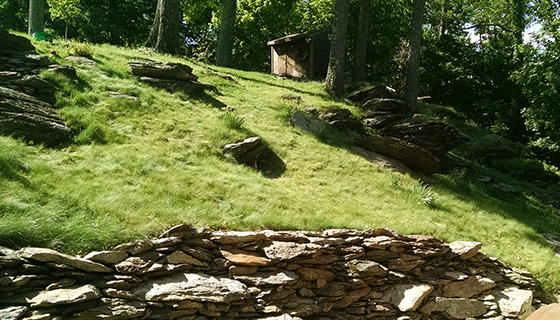
Grow a prairie grass lawn in no time
There once was a time in which tall prairie grass covered the United States, particularly in the Midwest. Now it’s making an eye-catching comeback, as more people discover the beauty of wildflowers and native grassy fields, not the mention the low-to-no maintenance.
People aren?t the only ones who enjoy open grassy fields filled with colorful wildflowers. Small animals, butterflies and a huge array of birds will come for a visit and return often. Composed of native grasses and plants, these lawns thrive without fertilizer, chemicals or even mowing.
Sold? If you?re ready to grow a prairie grass lawn, get ready for some light weeding, easy planting, basic maintenance and a lot of beauty.
What are you getting yourself into?
Most people have a general idea of what a prairie looks like, but what is it exactly? In the most basic form, it?s a lawn of mixed, short or tallgrass, depending on the growing conditions in your region.
On a broader scale, its a complete ecosystem that thrives in places with cold winters, hot summers and minimal rain. Over the years, the plant diversity and decomposition contribute to rich soil, enhancing the conditions for life to flourish.
Getting started
To grow a prairie grass lawn you?ll need to choose an open site with lots of sun. If possible, space it well enough away from trees so that the roots won?t need to compete for moisture and nutrients. Space it at least 25 feet from your home as during extremely hot, dry summers, they can be fire hazards.
Though traditionally common to the Midwest, these lawns can thrive in sandy, gravely or dry soil, too. The important thing is to choose seed mixes that are native to your area.
Planting
Compared to starting a garden, preparing a site for prairie grass and wildflowers is easy. First you?ll need to remove all existing weeds and growth from the area to minimize competition. Again, no need to fertilize or add pesticides. Prairie grass roots are dense enough to squeeze out most incoming weeds.
Prepare the site after the last frost and long before the summer temperatures roll in. You can sow the seeds either in early spring, or in fall before the first frost.
Typically, these lawns are between 60% and 80% grass in order to protect and support wildflowers, as well as protect, shelter and feed visiting critters. The choice of seeds versus plants is up to you, depending on timeline and budget. Seeds are more affordable, but will take a few years to mature.
Details
Spreading out the seeds evenly is very important for the health of your lawn. Lay them out by hand or with a spreader and be sure to distribute them in multiple directions, moving slowly over each area. If you?re adding wildflowers at the same time (recommended), these can be concentrated as you wish.
For every 1000 square feet, use half a pound of grass seed. After, gently water the site and spread a thin layer of straw to preserve moisture and keep birds from eating the seed.
Some maintenance
Easy as it is to grow a prairie grass lawn, there?s some maintenance required. Most of your work will be controlling unwanted weeds while the grass roots develop. Deciphering between weeds and immature plants will be a challenge at first. When in doubt, wait a few days to see how a seedling develops.
Your lawn will change not only with the years, but with the seasons. New critters will show up as others disappear. This is a work-in-progress so re-seed bald areas and add in new complementary plants and wildflowers as needed.
